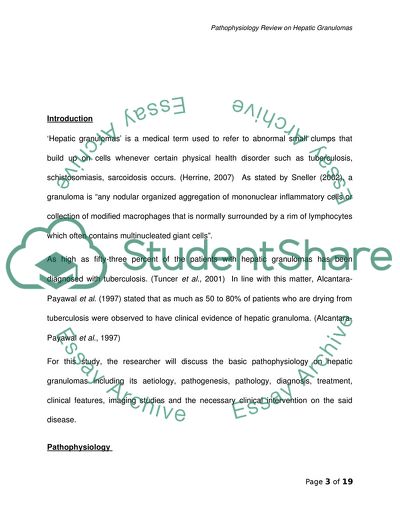Cite this document
(Hepatic Granulomas Case Study Example | Topics and Well Written Essays - 2000 words, n.d.)
Hepatic Granulomas Case Study Example | Topics and Well Written Essays - 2000 words. Retrieved from https://studentshare.org/health-sciences-medicine/1714681-pathophysiology-review-hepatic-granulomas
Hepatic Granulomas Case Study Example | Topics and Well Written Essays - 2000 words. Retrieved from https://studentshare.org/health-sciences-medicine/1714681-pathophysiology-review-hepatic-granulomas
(Hepatic Granulomas Case Study Example | Topics and Well Written Essays - 2000 Words)
Hepatic Granulomas Case Study Example | Topics and Well Written Essays - 2000 Words. https://studentshare.org/health-sciences-medicine/1714681-pathophysiology-review-hepatic-granulomas.
Hepatic Granulomas Case Study Example | Topics and Well Written Essays - 2000 Words. https://studentshare.org/health-sciences-medicine/1714681-pathophysiology-review-hepatic-granulomas.
“Hepatic Granulomas Case Study Example | Topics and Well Written Essays - 2000 Words”. https://studentshare.org/health-sciences-medicine/1714681-pathophysiology-review-hepatic-granulomas.


